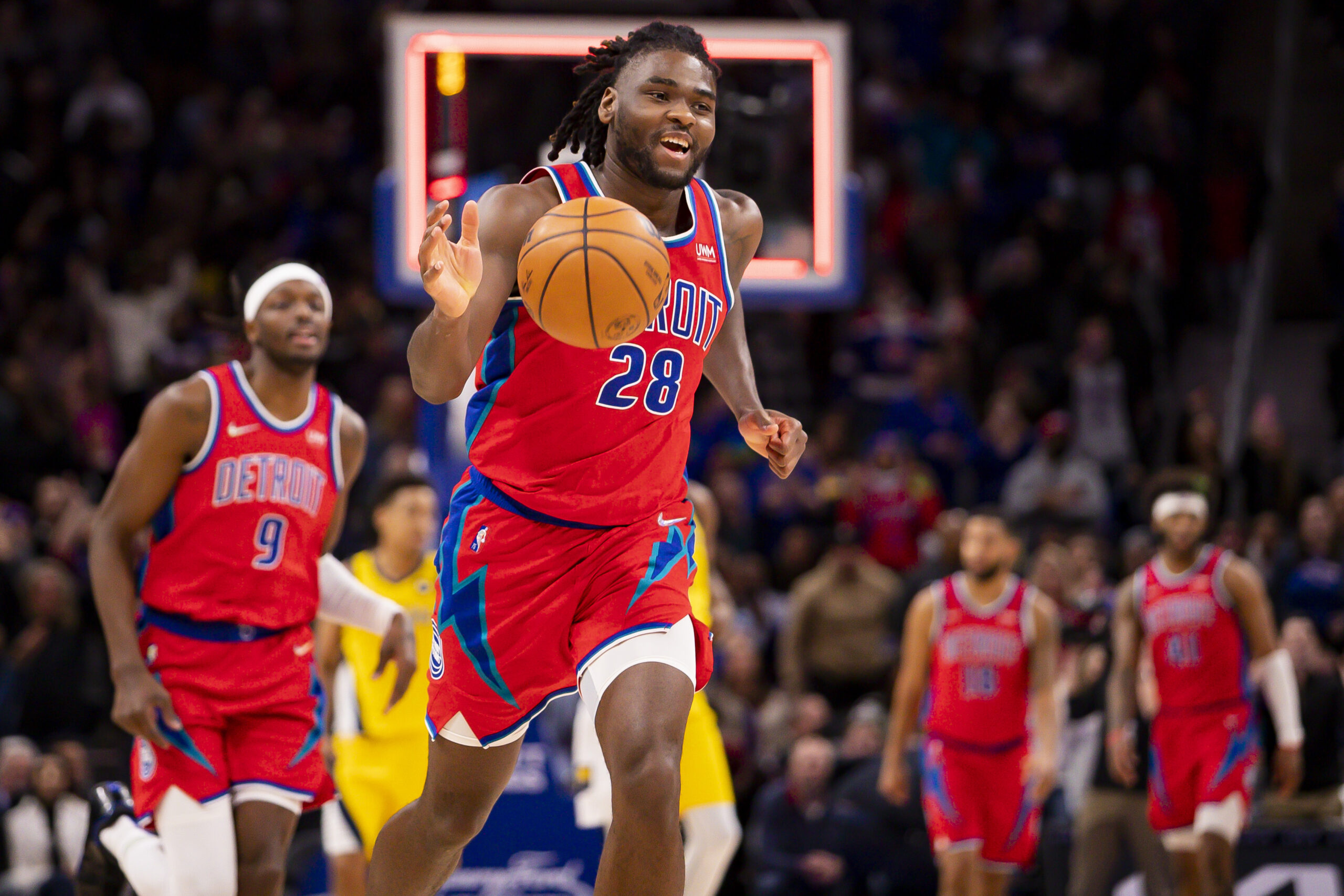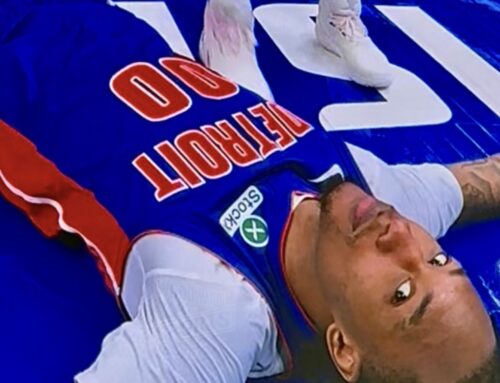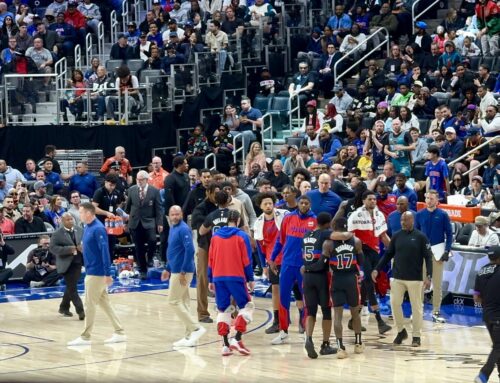One of the biggest questions the Detroit Pistons have to answer heading into next season is who will be the team’s starting power forward.
Last year’s starter, Jerami Grant, was dealt to the Portland Trail Blazers the day before the NBA Draft. Grant led the team in points per game last season, averaging 19.2 in 47 games played. With the 28-year-old veteran gone, the Pistons find themselves with a void in their starting lineup and no clear replacement.
That is not to say there is a shortage of candidates. Saddiq Bey, Marvin Bagley III and Kelly Olynyk could all slot in at the four and perform adequately.
Bey could slide up to power forward, and a guy like Isaiah Livers could replace him as the starting small forward. Bagley could slide in without disrupting the rest of the starting lineup. The 23-year-old just signed a three-year $37 million deal with the team this offseason. However, with Bagley’s defensive limitations, he may be better suited to a role as a pure scorer off the bench. Olynyk is more of a dark horse candidate to start. He is an option, but probably the least likely to fill the hole left by Grant.
One of the more intriguing options to replace Grant in Detroit’s starting lineup is Isaiah Stewart. The 21-year-old big man spent all of last season as the Pistons’ starting center. Stewart hangs his hat on the defensive end, but his offensive game has shown signs of development during his two years in the NBA.
With the arrival of rookie Jalen Duren this offseason, Stewart’s time as the starting center could be coming to a close. Transitioning to power forward could keep Stewart in the starting lineup in the long term.
Isaiah Stewart can stretch the floor
Spacing the floor is a necessity for a four in the modern NBA. There are very few starting power forwards in the league who are not respectable shooters from beyond the arc.
During his time in the league, Stewart has flashed the makings of a solid three-point shot. He shot 33.3 percent from three as a rookie and 32.6 percent in year two. Respectable numbers for a center for sure, but Stewart showed potential for more late in the 2021-22 season and during Summer League.
Stewart sank 54.5 percent of his shots from beyond the arc in his last 21 games of this past season. That number jumps to 61.1 percent in the final eight games. During that last span, he attempted 2.3 three-pointers per game. In Summer League, Stewart shot five-for-nine in two games, including a 3-for-4 performance in game one against the Trail Blazers.
Entering the 2022-23 season, Stewart is expected to let the three-pointers fly early on. ‘Beef Stew’ has a chance to prove he is a reliable shooter in a much larger sample size than he was able to display in his first two seasons. If the 21-year-old is able to continue connecting on three-point shots at a higher volume, then sliding to power forward would make a lot of sense for Detroit’s lineup.
Stewart has the defensive versatility to play power forward
In his two seasons in the NBA, Isaiah Stewart has established himself as one of the league’s top young defensive big men. Stewart led Detroit in blocks per game two years in a row. He also ranked first on the team in defensive win shares as a rookie and second in year two. His defensive rating has been below the team’s defensive rating in both seasons as well.
Stewart is not the prototypical size of an NBA center. He is undersized standing at 6-8 and 250 pounds, but his 7-4 wingspan gives him plenty of length. Stewart is not an elite rim protector. He can block shots, but he is not dominating around the rim like the league’s best shot blockers.
Sliding Stewart to the four could maximize his defensive abilities.
Stewart offers a lot of switchability as a defender. He can guard bigs, but he has also shown an ability to guard wings and some guards. Stewart can play as a perimeter defender when asked to. He has good footwork and stays in front of his man, cutting off driving lanes as a result.
Moving Stewart to power forward would allow him to play a role similar to what Robert Williams does for the Boston Celtics. Williams is listed as the Celtics’ center, but on defense, he often guards wing players and allows Al Horford to guard opposing centers. With that role, Williams is able to play as a weak-side shot blocker. Williams averaged a career-high 2.2 blocks per game playing as a roamer for Boston. Having Stewart play a role like this could unlock his game defensively.
Jalen Duren has a role to play in this relationship too
The Pistons could have their own version of Bostons’ Williams and Horford duo in Stewart and Duren.
Duren is a more traditional big man compared to Stewart. The 18-year-old stands at 6-10 and 250 pounds. He was a rim protector during his lone season at Memphis, averaging 2.1 blocks per game. As Duren develops, he could play that Horford role next to Stewart.
With Duren guarding opposing centers and Stewart playing as a weak-side shot blocker, the Pistons could find themselves with one of the better defensive frontcourts in the NBA one day. It will not happen right away, Duren needs seasoning. Although, his play during Summer League suggests he may be more NBA-ready than what was first initially thought when he was drafted.
Isaiah Stewart might enter the 2022-23 season as the starting center for the Pistons, but looking towards the future, he could play a more impactful role by playing at the four. The blueprint for how to maximize the play of a big man of Stewart’s size and skillset has already been laid out. As Duren develops and earns more minutes, it will be no surprise if Stewart finds himself transitioning to the power forward position.
(Featured Image Credit: Raj Mehta-USA TODAY Sports)












